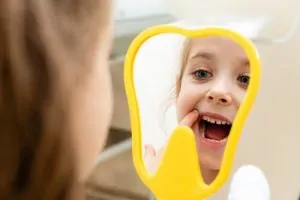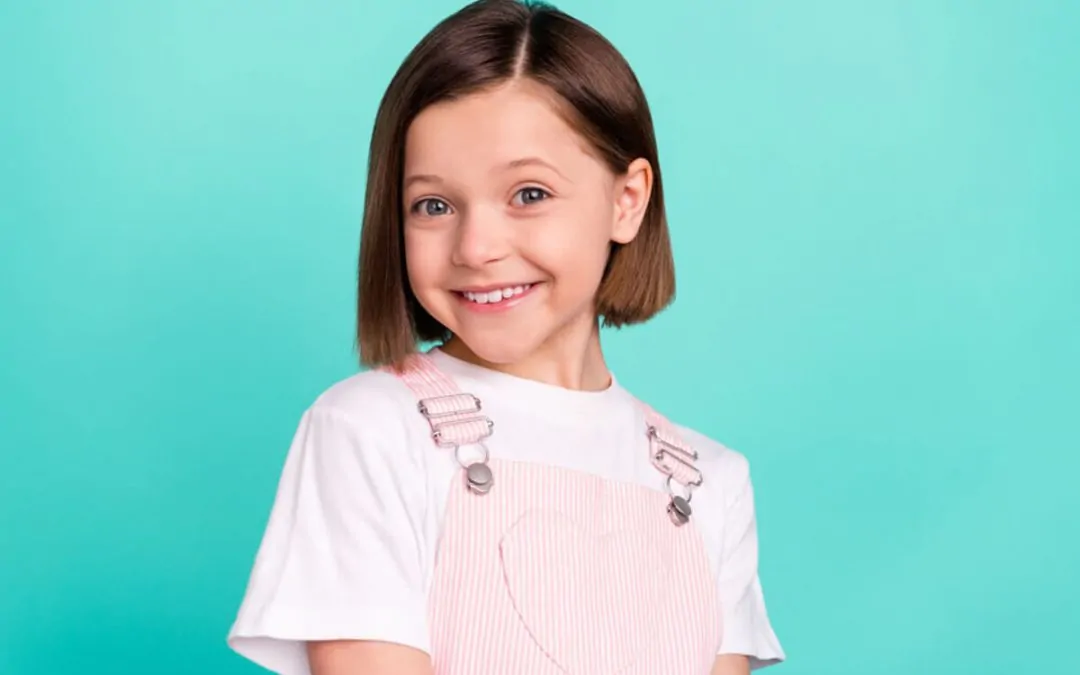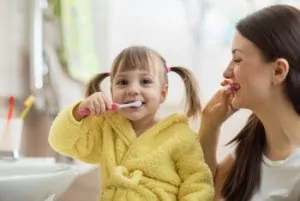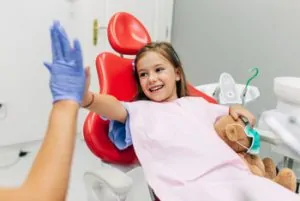The journey from a child’s first tooth to a full set of adult teeth is a fascinating part of growing up. One of the key milestones along this journey is the loss of baby teeth, a process that often sparks excitement, curiosity, and sometimes concern from parents and children alike. This leads to the common question: when do kids start losing baby teeth? The answer isn’t the same for every child, but there are common timelines, signs, and dental care practices parents can watch for to ensure their child’s smile develops in a healthy way.
In this guide, we’ll cover everything you need to know about when and how children start losing their baby teeth, what to expect as adult teeth emerge, and how to care for your child’s developing smile through it all.
What Are Baby Teeth?

By around 2½ to 3 years of age, most children will have developed all 20 of their baby teeth. These include:
- 4 central incisors (front teeth)
- 4 lateral incisors
- 4 canine teeth (pointy teeth)
- 8 molar teeth
Even though they’re temporary, baby teeth are essential for chewing, speech, and holding space for future permanent teeth.
When Do Kids Start Losing Baby Teeth?
Typically, children begin to lose their baby teeth sometime between the ages of 5 and 7. However, every child is different. Some may start as early as 4, while others may not begin until they’re closer to 8. The process continues until around age 12 or 13, when most of the baby teeth will have shed and been substituted by permanent ones.
The age when kids start losing teeth often correlates with when their first teeth came in. If a child’s first tooth appeared early, they may also start losing baby teeth sooner.
Which Teeth Fall Out First?
The order in which children lose their baby teeth typically mirrors the order in which the teeth erupted. This general sequence is:
- Lower central incisors, usually the first baby teeth to fall out
- Upper central incisors
- Lower and upper lateral incisors
- First molars
- Canine teeth
- Second molars, often the last baby teeth to fall out
This process makes room for new adult teeth, also called permanent teeth, to come through.
Why Do Baby Teeth Fall Out?
As your child grows, their jaw also grows, creating space for larger permanent teeth. The roots of each baby tooth begin to dissolve as the underlying permanent tooth pushes up. Eventually, the tooth becomes a loose tooth and falls out naturally.
It’s common for kids to notice a loose tooth and play with it until it comes out. While this is usually fine, encourage your child to be gentle, as wiggling too aggressively can cause pain or bleeding.
What Happens After a Baby Tooth Falls Out?
Once a baby tooth falls out, the adult tooth will gradually push through the gums. It may take a few weeks or even months for the new tooth to appear, and this can vary based on the individual tooth.
In some cases, the permanent tooth may start growing before the baby tooth has fallen out. This can result in two rows of teeth, often referred to as “shark teeth.” While this may look concerning, it’s usually harmless and resolves once the baby tooth is removed. If it doesn’t, consult your dentist.
What Are Permanent Teeth?
Your child’s second and last set of teeth is known as permanent teeth.
These include:
- Central and lateral incisors
- Canines
- First and second premolars (which replace the baby molars)
- First, second, and third molars (including wisdom teeth)
By around 12 or 13 years of age, most children will have lost all their baby teeth and will have about 28 permanent teeth. Wisdom teeth, also called third molars, typically erupt much later, between 17 and 25 years of age, if at all.
How Many Teeth Will They Have?
Children typically go from 20 baby teeth to 32 adult teeth. This includes:
- 8 incisors
- 4 canines
- 8 premolars
- 12 molars (including four wisdom teeth)
However, not everyone develops all their wisdom teeth, and many people have them removed to avoid dental crowding or complications.
What If a Child Doesn’t Lose Baby Teeth on Time?
If a child hasn’t started losing baby teeth by age 7 or 8, it’s a good idea to consult a dentist. While a slight delay is usually nothing to worry about, in some cases, retained baby teeth could indicate:
- Missing underlying permanent teeth
- Impaction (the adult tooth is blocked)
- A lack of space in the jaw
- Abnormal root structure
Your dentist may take X-rays to determine whether the permanent teeth are present and developing properly.
Caring for Your Child’s Teeth During the Transition
Whether your child is still holding onto their first baby teeth or they’re celebrating each new visit from the tooth fairy, oral care is essential. Here’s how to maintain their dental health during this important stage:
 1. Encourage Good Oral Hygiene
1. Encourage Good Oral Hygiene
- Use a soft toothbrush and fluoride toothpaste to brush your child’s teeth at least twice daily.
- Use a pea-sized amount of toothpaste for children over age 3.
- Make brushing fun by singing songs, using a timer, or getting a toothbrush with their favourite character.
- Floss daily once teeth begin to touch.
2. Maintain Regular Dental Visits
- Book regular dental check-ups, usually every 6 months.
- A dentist can monitor how your child’s baby teeth are falling out and how the permanent teeth are coming in.
- Look for signs of dental decay, crowding, or other concerns early.
3. Watch for Dental Problems
Be on the lookout for:
- Tooth decay, even baby teeth are prone to cavities.
- Loose teeth that aren’t falling out naturally
- Delayed eruption of permanent teeth
- Pain or swelling after a tooth falls out
- Dark or discoloured teeth
If your child complains of pain or you notice anything unusual in your child’s mouth, don’t hesitate to seek professional advice.
Role of the Tooth Fairy
Losing teeth can be an emotional and exciting time for children. Having the tooth fairy involved can ease a child’s nerves and make the experience joyful. Whether you leave coins, a small note, or a little surprise under the pillow, it’s a perfect moment to encourage healthy dental routines while marking a stage of growing up.
How to Support Your Child Emotionally
For some children, the idea of losing teeth can be unsettling. They may worry about pain, swallowing the tooth, or what will happen if the adult tooth doesn’t come in straight.
You can help by:
- Reassuring them that losing their baby teeth is a normal part of growing up
- Explaining what will happen in simple, age-appropriate terms
- Reading children’s books about losing teeth
- Staying calm and positive, especially if blood is involved
If your child is very anxious about tooth loss, talk to your dentist, as they can offer reassurance and help explain things in a comforting way.
Monitoring Tooth Development: Why Professional Support Matters
While most children follow a typical tooth loss timeline, some may need a little extra monitoring. Delays, early tooth loss, or unusual eruption patterns can sometimes signal underlying issues such as impaction, overcrowding, or missing permanent teeth. Regular dental visits make it easier to detect these signs early and guide intervention if needed. In some cases, X-rays or further evaluation may be recommended to ensure permanent teeth are developing and erupting correctly.
Final Baby Tooth: What to Expect
The last baby tooth to fall out is usually one of the second molars, typically between ages 10 and 13. After this, your child’s permanent teeth will continue to settle in, with first molars and other permanent teeth continuing to erupt in the back of the mouth.
Don’t forget that wisdom teeth, the third molars, may appear years later, sometimes not until a person’s early twenties. These teeth often require assessment and sometimes extraction if they cause problems like crowding or dental decay.
Summary: When Children Start Losing Baby Teeth
Here’s a quick recap of what to expect:
- Children typically begin shedding their baby teeth at about 6 years old.
- Central incisors are typically the first to go
- The process continues until around age 12 or 13
- Adult teeth begin to erupt as baby teeth fall out
- Proper dental care, consistent oral hygiene, and routine check-ups are key to a healthy smile.
- The tooth fairy can make the experience more fun
- Consult your dentist if tooth loss seems unusually early or delayed
If you’re concerned about delayed tooth loss or want professional guidance as your child transitions to their adult smile, book a consultation with us at Good Choice Dental or call (02) 8203 8760. Our team is here to support your child’s dental health at every stage.
Resources
Cherney, K. (2023). ‘What to Know About Tooth Decay Stages’. WebMD, 6 September. New York, NY: WebMD LLC. https://www.webmd.com/oral-health/what-to-know-tooth-decay-stages
Watson, S. (2024). ‘Caring for Your Baby’s Teeth’. WebMD, 15 February. New York, NY: WebMD LLC. https://www.webmd.com/parenting/baby/caring-babies-teeth
WebMD Editorial Contributors. (2023). ‘What to Know About Eruption of Child’s Permanent Teeth’. WebMD, 30 July. New York, NY: WebMD LLC. https://www.webmd.com/children/what-to-know-eruption-childs-permanent-teeth


 1. Encourage Good Oral Hygiene
1. Encourage Good Oral Hygiene



Recent Comments